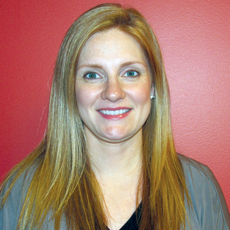
A University of California San Francisco study found that 43% of older adults reported feeling lonely. The same study found that those adults had a greater risk of health decline or death, highlighting the critical link between loneliness and health.
Given the health factor at play, senior living facilities have a responsibility to ensure their residents feel connected instead of isolated. One effective form of programming is intergenerational engagement, which breaks through an increasingly age-segregated society and delivers benefits to both the old and young alike. Simply put, senior living facilities that provide intergenerational programming offer their residents a greater quality of life, and by incorporating volunteerism into this programming, can also have a positive impact on the community around them.
A sense of community
Service opportunities that blend generations promote a meaningful and purpose-driven life for senior living residents, while also ensuring they feel involved with local events and the community beyond their immediate walls. Older adults who volunteer experience health benefits and live longer, with the intergenerational component providing the bonus benefit of decreasing any feelings of isolation.
Coordinating formal relationships with schools is a great way to ensure that you have consistent intergenerational programming, while also giving your residents the satisfaction that they are truly making a difference in the lives of younger generations. Intergenerational mentoring programs reduce risky behavior in children — they are 46% less likely to begin using illegal drugs, 27% less likely to begin using alcohol, and 52% less likely to skip school. Learning improves in schools where older adults have a regular presence. So don’t just conduct the programming, but explain its benefits to your residents so that they understand and take pride in the value they are providing.
Leverage technology to stay connected
One intergenerational engagement approach is that it has to be limited to in-person opportunities, which take careful planning and organizing. Utilizing communications technology, facilities can put the power of information and communication in the hands of their residents — from checking the weather and daily menu to corresponding with loved ones and being aware of what’s going on in their community. This allows residents to remain engaged with other generations even on days when no in-person programming is planned.
Older adults are more receptive to technology than commonly believed. With over 50% of older adults using the internet and owning cellphones, technology is a must as senior living facilities look to attract new residents. And for residents who aren’t as savvy, you can flip the script and turn students into teachers — consider hosting youth-led programming where school-age students are conducting technology training. Not only will your residents learn valuable skills, but you’ll be creating further intergenerational touchpoints.
Intergenerational engagement enables increased quality of life, positively impacting resident satisfaction which can help drive occupancy. Forward-thinking senior living facilities are making intergenerational engagement a core component of their programming efforts, and utilizing tech to expand beyond in-person engagement. As you look at your 2018 programming and technology plans, intergenerational engagement should be a top priority for your facility.
Danielle Myers is General Manager of Status Solutions, developer of the CATIE self-service information and communication technology.




